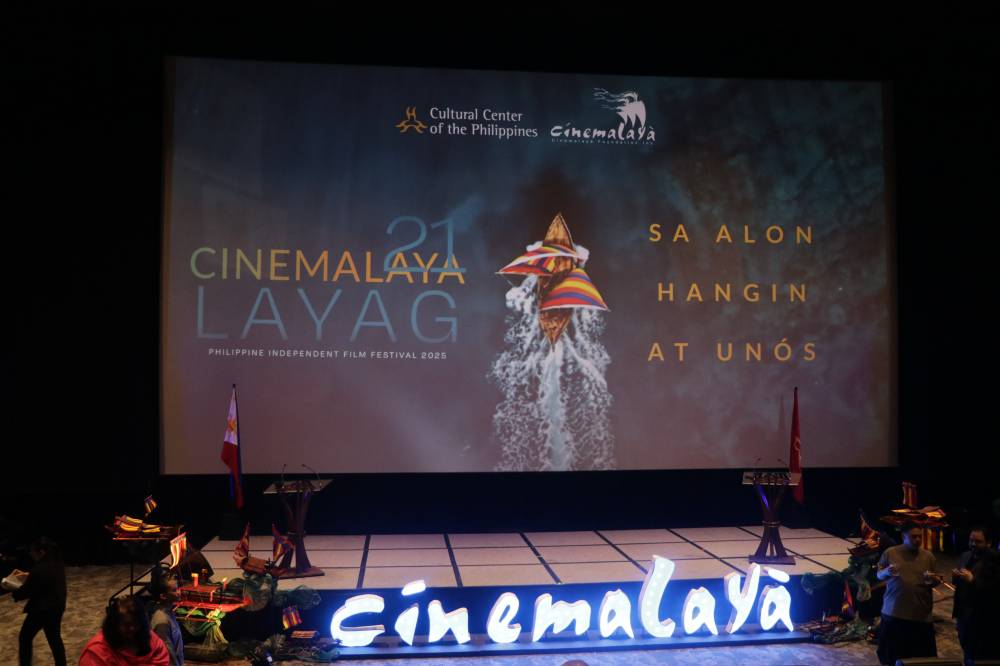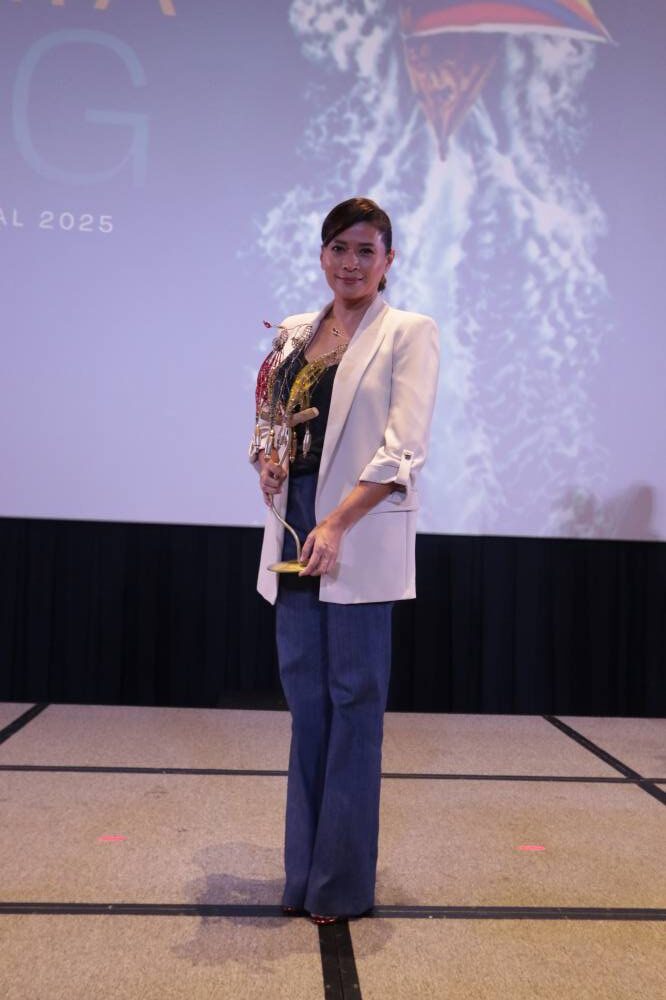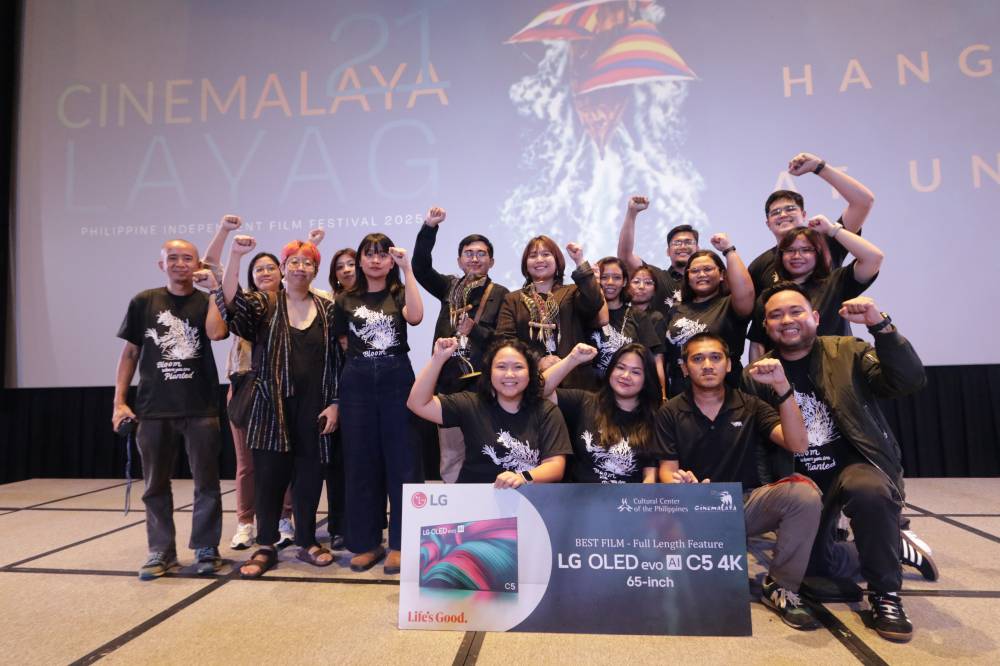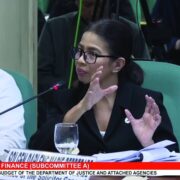Cinemalaya 2025 ends with a defiant cry

At the awards night of the Cinemalaya Philippine Independent Film Festival last Oct. 12, festival director Chris Millado said that the billions of pesos lost to corruption and ghost projects could otherwise fund hundreds of indie films, create thousands of jobs, build cinematheques in the provinces, mount film markets, and reach millions of students through workshops and screenings.
And still, there would probably be enough leftover to establish a permanent venue for those endeavors. “Pero sabi nga ni Mike de Leon, ‘Kung mangarap ka’t magising,’” Millado says, only half in jest.
But despite funding constraints that led to delays and the downscaling of this year’s Cinemalaya, there emerged a glimmer of hope: From P5.8 million last year, this edition earned P13.4 million in combined box-office sales from Shangri-La Plaza, Gateway, and Ayala cinemas—a 131 percent increase, with its reach growing from 30,000 to 32,000 viewers.
The festival’s artistic triumphs were equally compelling, with last year’s entries—“Alipato at Muog,” “Kono Basho,” and “Tumandok”—earning accolades at subsequent award-giving bodies, most recently at the Gawad Urian.

Growing footprint
It could well be a clear sign, Millado notes, of the festival’s “growing footprint” outside the Cultural Center of the Philippines, its main proponent and traditional home, which it left this year due to ongoing renovations. “Habang nginungudngod tayo sa burak ng mga sakim ay binabangon naman natin ang reputasyon ng kamalayang Pilipino sa paraan nang masining na paglikha, mga kwento, at pagdalumat,” Millado says.
That Cinemalaya and Filipino filmmakers continue to depict our lives, struggles, and triumphs as a people is nothing short of extraordinary. Success and resilience, however, shouldn’t imply contentment and complacency. Because if there’s one thing that became increasingly clear as the night wore on, it’s that corruption affects not only the physical mechanisms of filmmaking—the grants, production costs, and venues—but also the stories this year’s entries tell.
This crucial message was set early on, with deputy festival director Tess Rances stating during the opening ceremony that “corruption stumps and kills creativity.”
“Imagine how much more we could achieve and how many more stories we could tell if it weren’t for corruption,” says Daniel de la Cruz, director of “Hasang,” the NETPAC Award winner in the short film category.

Mylene Dizon, Best Actress winner for “Habang Nilalamon ng Hydra ang Kasaysayan,” highlights her film’s message of hope with equal parts defiance: “May pag-asa… na balang araw babalik sa atin lahat ng pera natin na ninakaw ng mga hayup—mga hydra na ‘yan!”
Self-accountability
The consequences of corruption, especially on the marginalized, are arguably best observed in the Best Picture winner, “Bloom Where You Are Planted”—a documentary that focuses on the lives of the red-tagged activists Amanda Echanis, Agnes Mesina, and Randy Malayao, and the farmers they advocate for in Cagayan Valley.

Meanwhile, Che Tagyamon, winner of Best Editing, also for the same film, points out that such state abuses and injustice aren’t isolated, but are, in fact, interlinked pieces of a system of corruption. “Hinihiwalay nila ang laban natin sa Maynila, sa flood control, sa kinakaharap natin sa kanayunan—mula sa pagkasira ng Sierra Madre at pagbaha sa mga taniman nina Manang Jackie (Ratin, one of the farmers), hanggang sa korupsyon,” she says. “Magkakaugnay ’yun.”
But amid the calls for accountability from the powers that be came an urging for self-accountability. As difficult as it is to secure elusive funding, that shouldn’t stop the community from scrutinizing the ethics of those resources. Otherwise, they run the risk of using the very system they seek to critique to fund their critique.
“Hamon sa atin na mas kilatisin at sipatin ang mga nilalapitan nating institusyon, at matuto’t magwasto ng pagkakamali,” stresses director Maria Estela Paiso of “Kay Basta Angkarabo Yay Bagay Ibat Ha Langit.” The docu-fiction, which follows a young girl who turns into a fish against the backdrop of the West Philippine Sea conflict, won the Special Jury Prize for Short Film. “Tumingin sa kundisyon ng lipunan at gumawa ng mga pelikula para sa interes ng masa,” she adds.

Collective indignation
Renei Dimla’s “Republika ng Pipolipinas,” a mockumentary about a disillusioned farmer who declares her own micronation amid threats of loss of land due to corruption, is often described as “timely” and “relevant.” But ironically, it’s only in its obsolescence that its true aspiration can be fulfilled.
“‘Yun ang nakakalungkot,” says the director, who won the NETPAC Award for Full-Length Film. “Sana paglabas natin, gawin natin ang lahat para maging irrelevant na in the future ang mga ganitong klaseng mga pelikula.”
As such, the collective indignation against corruption inevitably grew to a greater call to action against injustice in various forms: imperialism, fascism, the abuse of women, and human rights violations, including extrajudicial killings. These demands also transcended the local shores, with filmmakers standing in solidarity with the people of Palestine and calling for the freedom of political prisoners, including and especially Amanda Echanis, who was arrested in 2020 on reportedly questionable charges.
Kiri Dalena—a prominent filmmaker and activist whose sister Sari Dalena won Best Director for “Cinemartyrs”—stresses: “Activists are not terrorists.”

Before long, on Abao’s lead, the venue rang with chants of “Makibaka! Huwag matakot!” And with it came calls to bring their advocacy from the screen to the streets and join the anti-corruption protests on Nov. 30. After all, as Best Screenplay winner Tim Rone Villanueva put it, describing the impetus for his film “Child No. 82: Anak ni Boy Kana: “Kailangan na nating gumising sa pantasya na walang superhero na sasagip sa ‘tin kungdi tayo rin.”

















